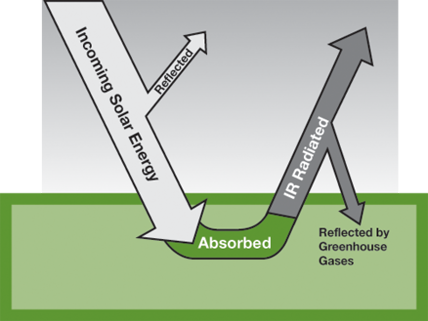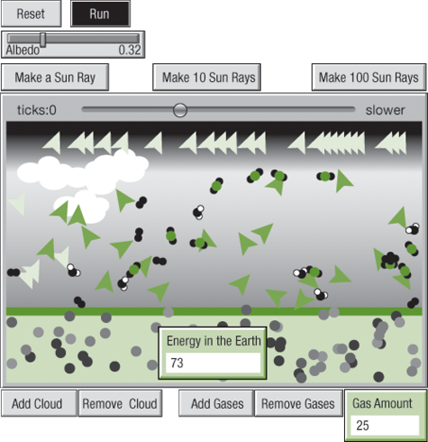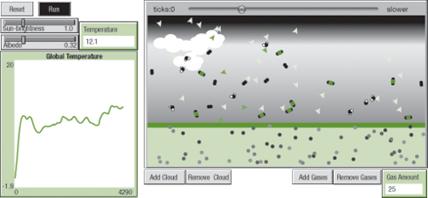Thursday’s Lesson: The Greenhouse Effect
Students need to understand the greenhouse effect to grasp the causes of global warming. Studying the greenhouse effect covers many important science topics—light, energy, molecules, heat, and temperature, to start—and supports system thinking.
But understanding the greenhouse effect is challenging. It is complex, involving different kinds of light and their interactions with gases, the earth, and clouds. Students must grapple with both the atomic scale of tiny light particles interacting with atoms and the gigantic scale of the entire earth. What makes the greenhouse effect confusing is that it is the result of the competing effects of incoming energy in the form of light from the sun and infrared light lost to space (Figure 1).

Greenhouse Gases
You can use the Greenhouse Gases lesson as is or customize it (see sidebar) to teach your students about global warming and perhaps even inspire them to make changes that will have positive effects on the planet.
This lesson, created originally for ninth grade students, features two interactive models created with NetLogo, each designed to support student learning through inquiry. Students should be encouraged to learn how to run the models and experiment with the different controls, and to observe how the model works.

The first model helps students understand how light, atmosphere, and the earth interact (Figure 2). It introduces the idea that when light energy enters the atmosphere some is absorbed, depending on how reflective the earth is on average (the albedo). Students can send single packets of light and watch where each goes. The light energy can be seen heading to the earth, resulting in infrared (IR) energy radiated back into space. Careful observation reveals that clouds reflect sunlight, but not IR. Conversely, greenhouse gases pass sunlight, but not IR.
The second model puts these all together by supplying a stream of light and allowing the system to reach temperature equilibrium (Figure 3). The new idea is that there is an average global temperature, which is determined by the amount of energy in the earth.
Students can see that the temperature always fluctuates a bit, but that clouds, greenhouse gases, and changes in albedo all impact the global temperature.
Assessing student understanding
After students have worked through the activity, you can assess what they have learned by using the following challenges.
Challenge 1: The snowball earth
Some scientists think that the earth once froze over. Can you adjust the model to show this? Once the earth becomes a snowball, how might it recover?
Challenge 2: Population rise
What happens to the earth if the population increases? How could you set the controls to approximate a crowded earth? Justify your choices. What happens to the temperature?
How accurate is a model?
No model completely captures all of reality. The earth is a complex system of oceans, albedos, light inputs, multiple greenhouse gases, and radiation levels, all of which vary greatly from place to place. Our greenhouse models are simplified and do not include some interactions that could be important, for example, absorption and radiation in the atmosphere. To build fairly accurate models of the earth’s temperature and how it will rise over the next decades requires the largest computers that exist.

Given the problems with models, should we ignore them because they are not exact? Not at all. Instead, the limitations of every model need to be understood. Stimulate a discussion about the uses and limitations of models. Ask students: What simplifications have been made? What is the effect of these simplifications on your overall understanding of global warming? Even a simplified greenhouse gas model can make a real impact.
